Low Poly Wood Art Low Poly Wood Art Reddit
Guide to that elusive "PS1-pixelated-lowpoly"(just non really)
With the videogame playing population growing up we've finally broke from pixel-art nostalgia into the broadly called "low-poly" nostalgia. On closer look this broad categorization gets further described every bit "PS1 pixelated textures low-poly", which is a bit better, but still is a actually broad and a pretty incorrect description of this style that's so beloved to a plenty of game-playing and game making individuals these days. I'll try to swoop into some of the technicalities and examples of this style in the attempt to find information technology's characteristics and some actual technical requirements to meet this manner.
Let'due south offset with the obvious, calling it PS1 low-poly is incorrect, mostly because the aforementioned games were release on Nintendo 64, Dreamcast and PC. More so, games released after can be put into the aforementioned category, plenty of NDS or PSP games fit into the same style and adhere to the same economy principles. The only real surface level thing unifying these games is the game size, that is, the games came on CDs. The advent of a DVD format actually changed up how the games look, so the graphical style nosotros're talking about here is called CD-3D in smaller circles.

First let's wait at the games that fit the criteria would give you some information to describe the style, textures are evidently pocket-sized enough to have visible pixelation (hidden by texture filtering) and models are obviously low-poly (that is around or less than 500 triangles for a character), but let'southward run into what doesn't seem then obvious. Here's Spyro and Crash, fan favorites


Both games check both points we've noted before, merely what's not obvious to an untrained eye is that these games both extensively utilise Vertex Colour, the matter you'll notice more and more than in other games nosotros'll talk about. Vertex Color is absolutely elementary, each vertex of a mesh can be assigned a RGBA value and they're and so linearly blended with other vertex colors. Notice how in Spyro the yellow and purple light is placed on places where texture is repeated, post-obit that you can eyeball where the wireframe is so yous'll see that the vertex colour is used to simulate lighting. Crash himself is filled with Vertex Color, it'southward a cheap style to avoid using textures, while having some control over the color of the thing, instead of it being a solid chunk. If yous search-engine around you tin can besides detect some really fascinating notes on the evolution of the original Crash and the tricks they've pulled! The more ingenious way to use Vertex Colour is to accept a expect at Spyro skyboxes:

Observe how the clouds are diamond-like in shape and are linearly gradiented to the next point in the wireframe.
Vertex colour was used extensively and roughshod off with the increasing complexity of the meshes, delegated mostly to technical masking of stuff like foliage, information technology'south still a powerful tool for lower triangle counts.
Textures
Now, let's talk about the textures. Pixelated textures look nice and crisp these days, at the age of 1080p being the norm, turning texture filtering really makes the games look crisp and feel right
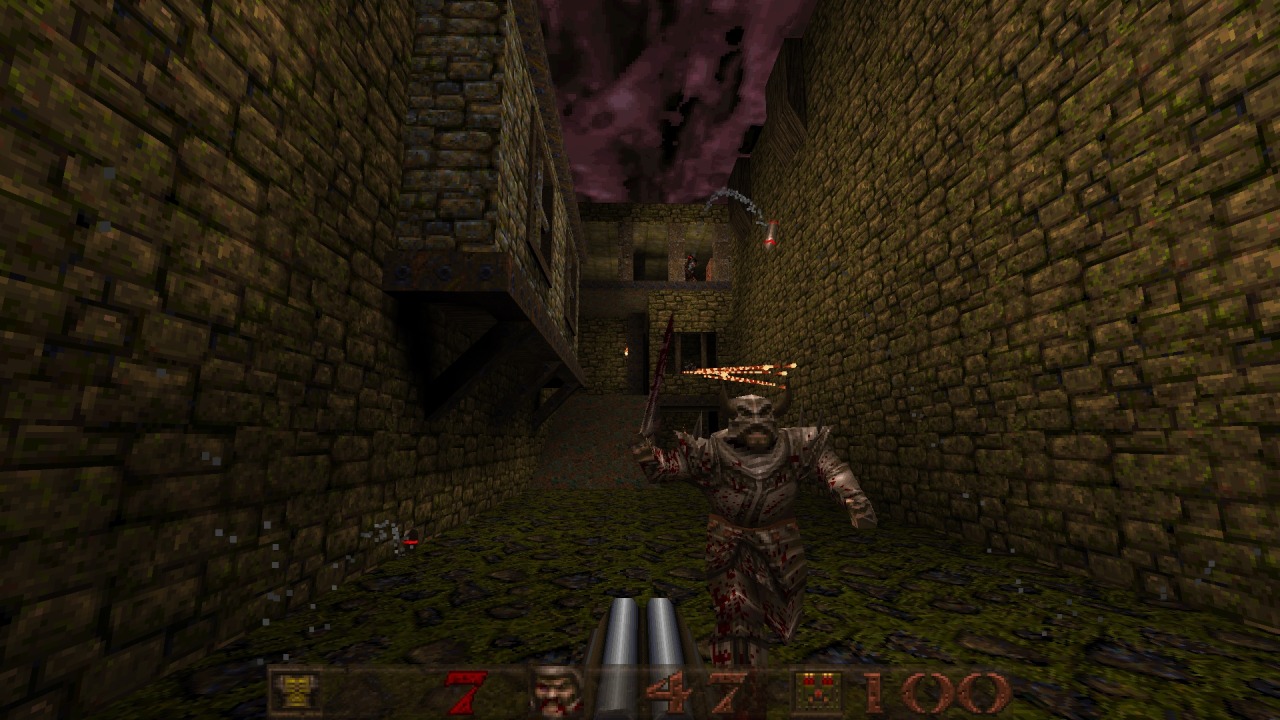
Convulse 1 is a perfect example of CD-3D style, oftentimes undeservingly forgot in discussions about this style.
But this makes u.s.a. forget that the textures were often authored with texture filtering in listen. Careful stride gradienting to brand textures seem smoother later being filtered is a arts and crafts in itself.

Texture filtering is keen in itself, some games await better without it these days, because of the display resolutions, merely it'southward still a valid tool to employ, information technology can aid push depression-res texture a bit higher and produce a softening consequence make those 4 pixels into a round circle or improve a visual effect.
Of course, some games took a deliberate arroyo of avoiding smudged look, like Megaman Legends, for instance.
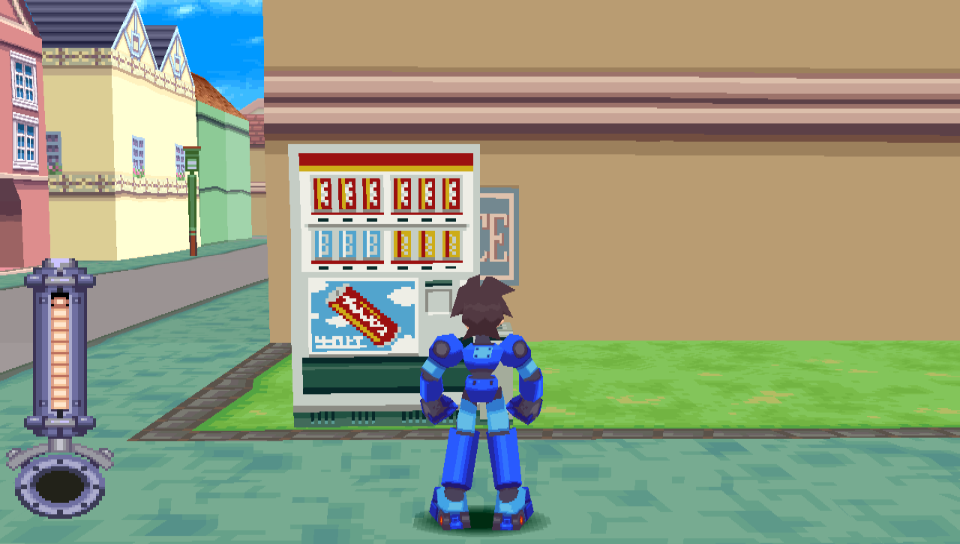
Via a very deliberate texture economy and unwrapping the developers were able to produce very well-baked and pixel perfect textures (slightly warped by the infamous PS1 rendering), that look absolutely phenomenal when you render the game in a modern resolution. Pixel-aware UV Unwrapping, is being used in almost games that are considered the acme of CD-3D fashion, this technique is so powerful, that it was used to nifty effect in PS2 era games, PSP games and fifty-fifty modern games like Guilty Gear (for a different effect though). Permit'south take a closer look,
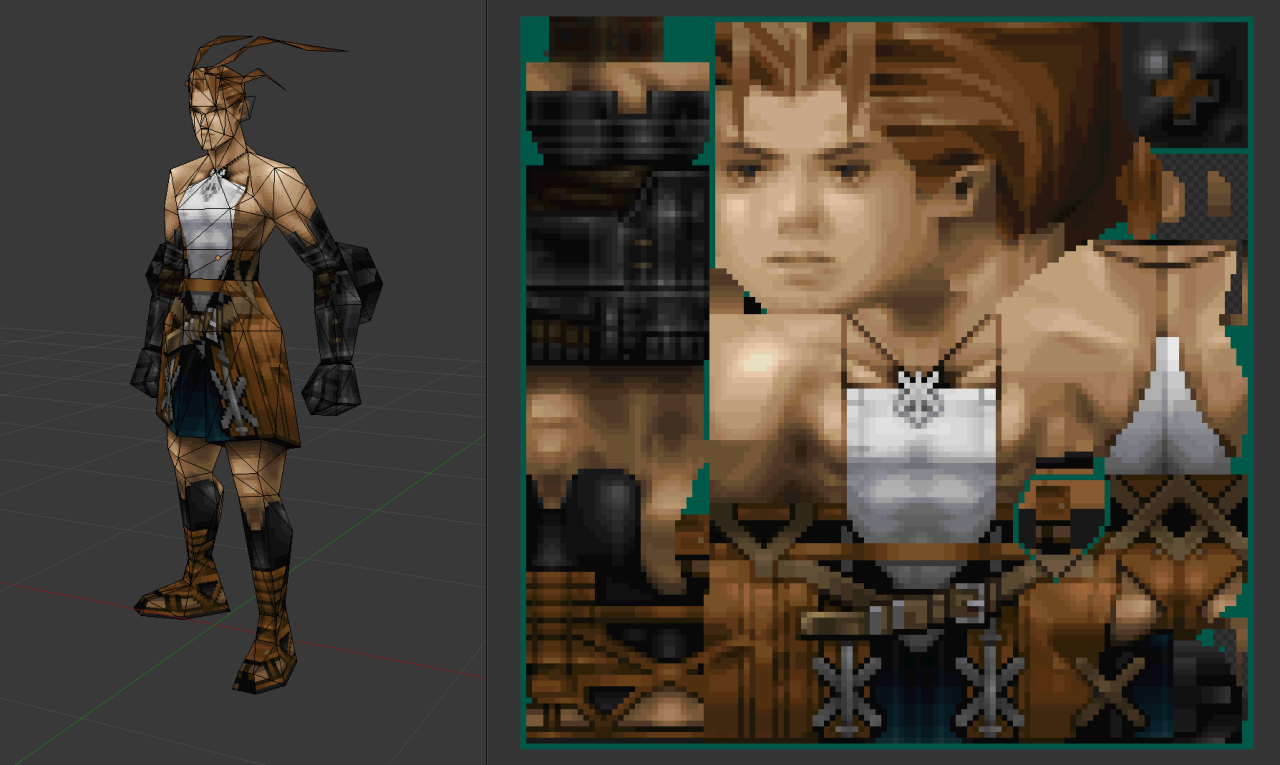
As you lot tin can see, our character is unwrapped in square pieces in such a mode that a straight line on a texture will produce a directly line on a model. While Vagrant Story is an admittedly perfect in execution of this technique, information technology'due south also used in a aforementioned way in Megaman Legends
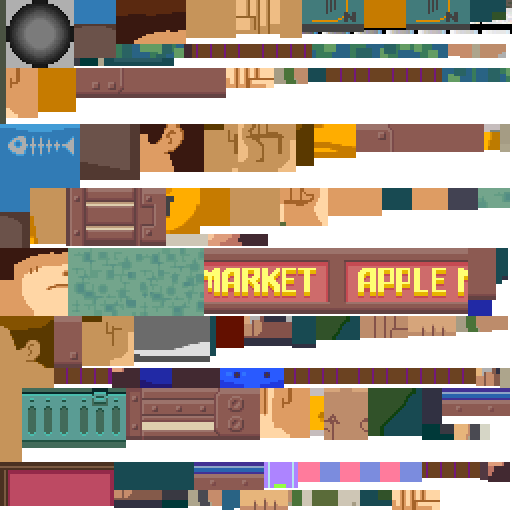
While I couldn't discover a reliable tool that works with modern 3D modeling software to allow pixel perfect alignment, but using a UV Checker volition produce keen results. This method also requires some thought put into your topology before unwrapping, but it's strong point is that you tin brand changes into your unwrapping and geometry easily, making petty tugs won't suspension the whole thing.
Every bit you can also note, Vagrant Story textures are authored in a unmarried atlas, while Metal Gear Solid separates this atlas into smaller chunks similar this:
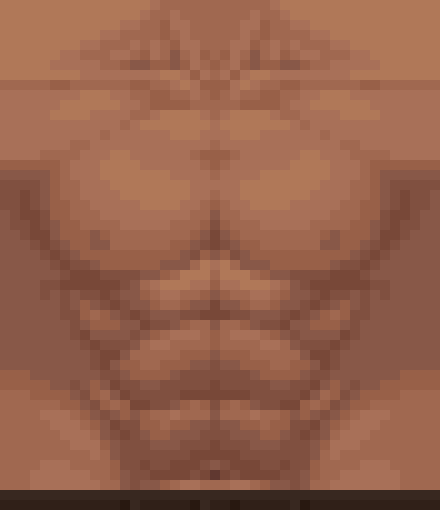
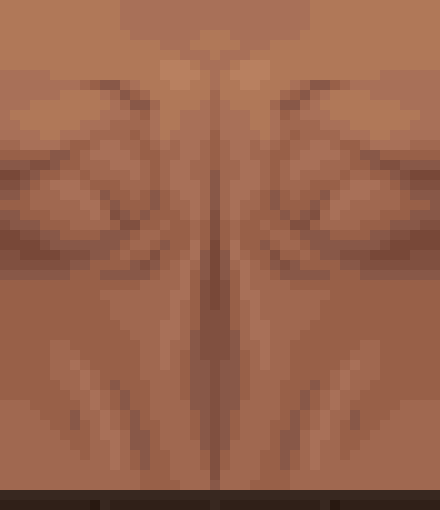
Allowing for easier unwrapping, since y'all tin unwrap into the full UV space and then modify the size of the texture to calibration your results. The other important thing is that you probably want your characters in a T-pose when y'all're unwrapping, since this allows for easier use of normal based unwrapping, considering your model would exist authored with four to eight sides for limbs and torso it could exist box unwrapped and and so tweaked for optimal results.
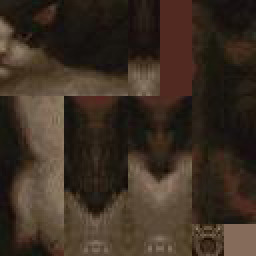
Silent Hill one used the same technique, and is also regarded as ane of the best looking PS1 games.
While this is the all-time do for this kind of await, it's absolutely not required, Quake ane used a actually loose flat unwrap:
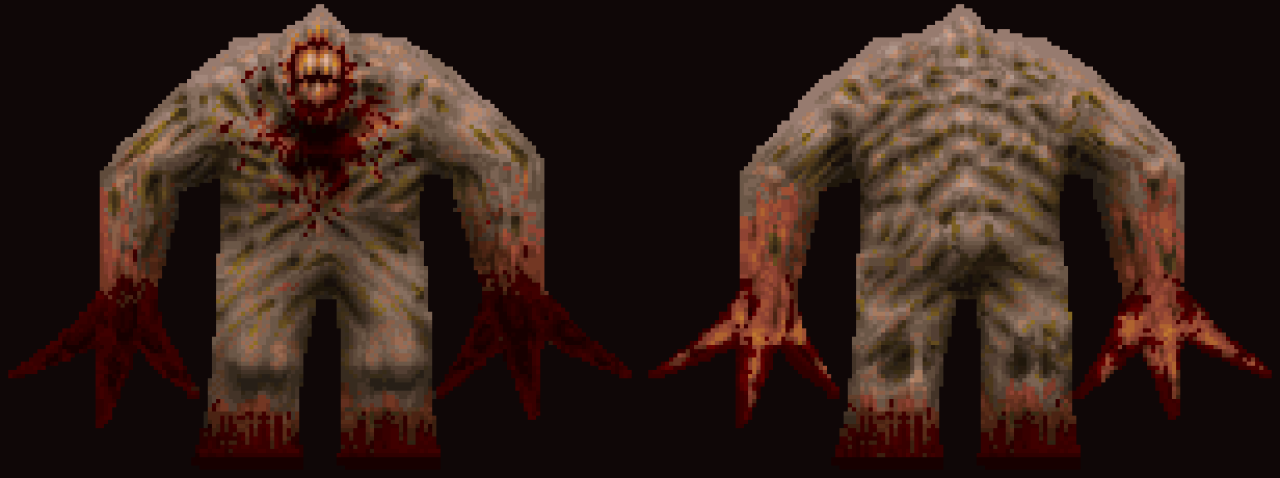
But information technology's nonetheless looks encarmine amazing in the end.
While the topic of using UV Unwrapping for crisper issue is countless I'd besides dearest to bring your attention to a certain Jet Ready game
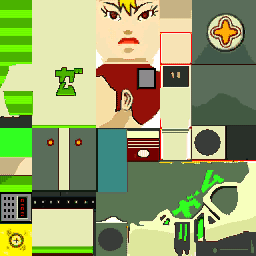
It also uses the same technique equally Megaman Legends, but information technology tops information technology off with some cel-shading, producing well-baked, stylish and iconic look.
Here's some technicalities: Graphic symbol textures are unremarkably 256x256 for main characters, 128x128 for other characters, character usually have ~100-120 colors per full atlas. MGS breaks down the atlas into chunks and then each chunks is usually 8 colors. And then when authoring textures, make united states of Indexed Color image manner or Salvage for Web.
At present let'south movement from character textures to
Earth textures
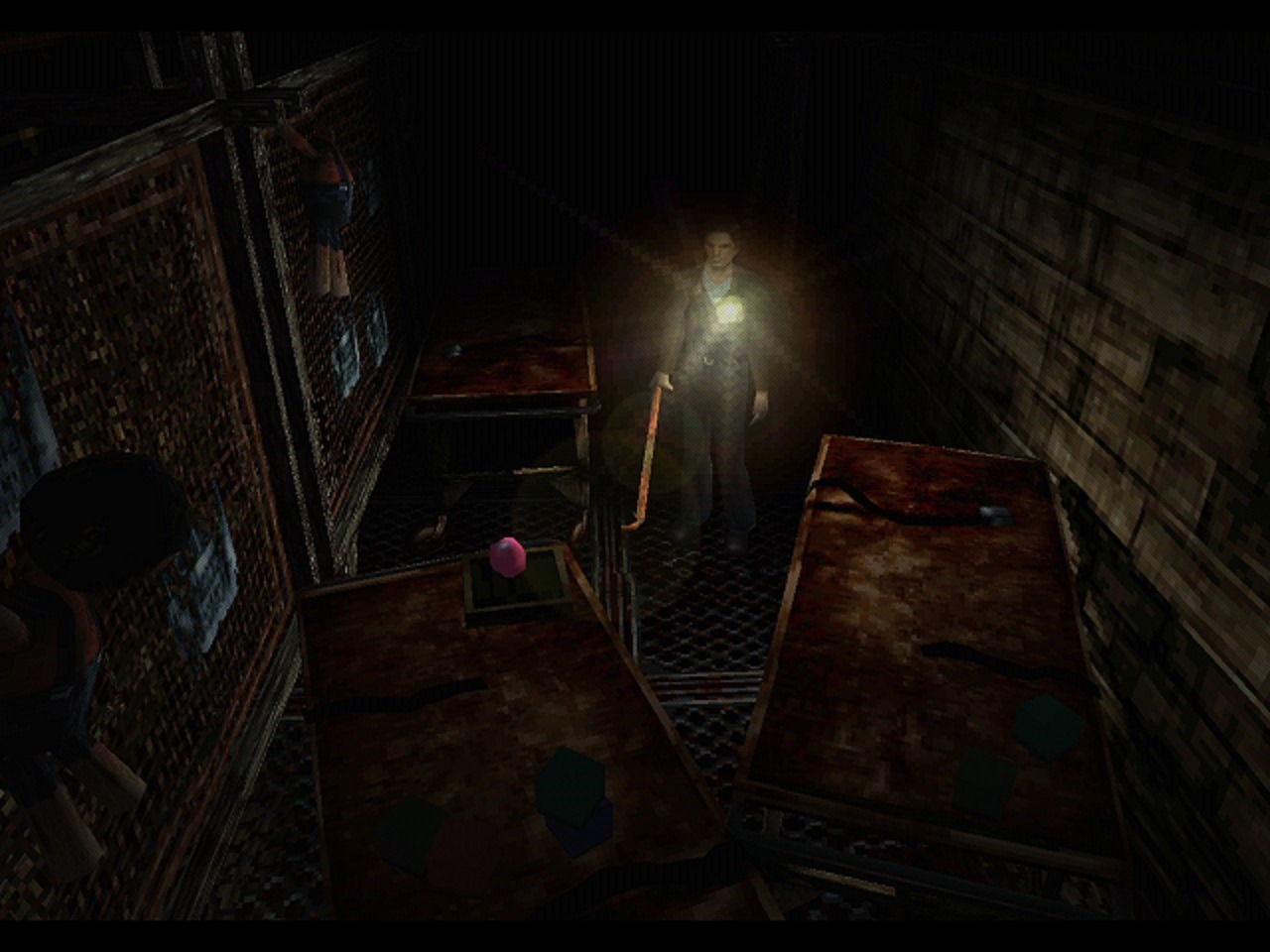
Universally regarded equally best looking CD-3D games share the same trait, not just the characters expect amazing, but the environments besides. Despite difficult limitations, the environments wait very much affected past lighting. A lot of the times this is accomplished with this i elementary trick that was only improved with modern technology. That is, a lot of the lighting is baked into the textures
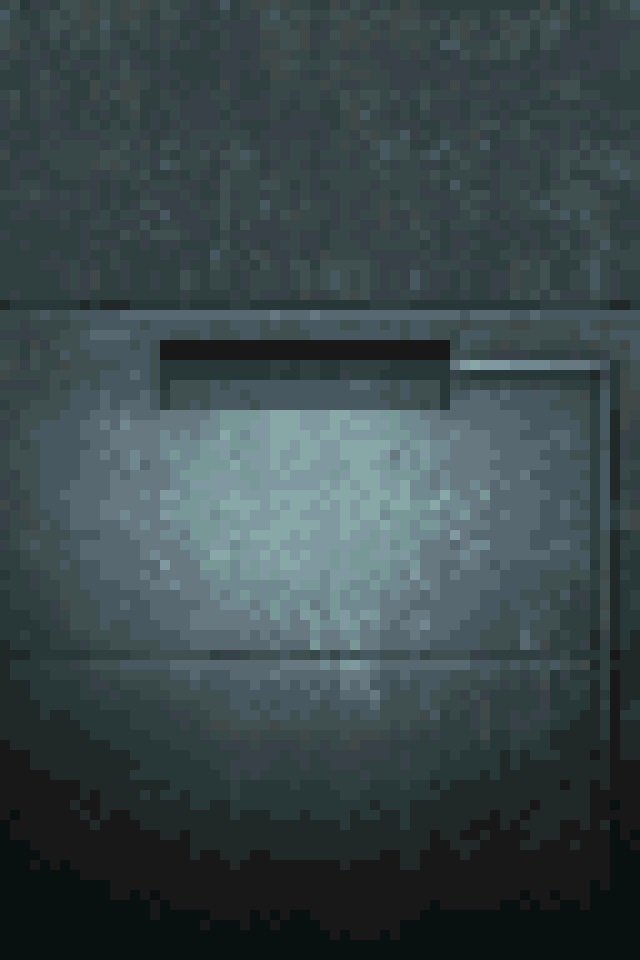
While this limits you on the amount of lighting scenarios or makes you produce more than same-ish assets this certainly elevates the look. While present baked lighting is not something that heady, it'southward also beingness washed on a separate "layer", and then in that location's no need to make a split texture for every lighting scenario, notwithstanding the resolution of a lightmap should not be higher than your texture, to not produce a inexpensive and uncanny upshot. You still desire to bake some fake lighting into your texture, which contradicts the rules of PBR, merely since yous're not using normal maps, rules of PBR should non apply in the aforementioned fashion.

The other important tool to use, is the i we've talked nearly, that is, Vertex Color. Vagrant Story uses to great consequence, while it's environment textures don't have lights baked, they use vertex color extensively to create a variety of moods and lighting scenarios.

Using best texturing practice, Vertex Color and making sure your lightmaps are matching resolution to your textures will produce the best results.
Now permit's talk why I don't advise using a lot of normal maps for this style. The simple answer, information technology's somewhat difficult to produce a normal map that will work with an unfiltered look, but it's somewhat manageable to do it if you're using texture filtering. The effect arises when you endeavour brand your normal maps unfiltered, this volition make your result either a mess or a bunch of visual noise. If you're trying to make sharp pixel-perfect textures and then will try to make normal maps to match you'll go very harsh results. The simply mode I tin see it working somewhat squeamish is to make a normal map that's less detailed and then apply it texture filtered to requite some book to your objects, while not trying to chase pixel details.
The suggested method is to do a rough sculpt -> broil it down -> utilise ambience occlusion and other masks to author a texture map with more details. Then use a detailed texture and less detailed normal map for optimal event.
Equally a closing thought, allow's talk nearly the
Meshes
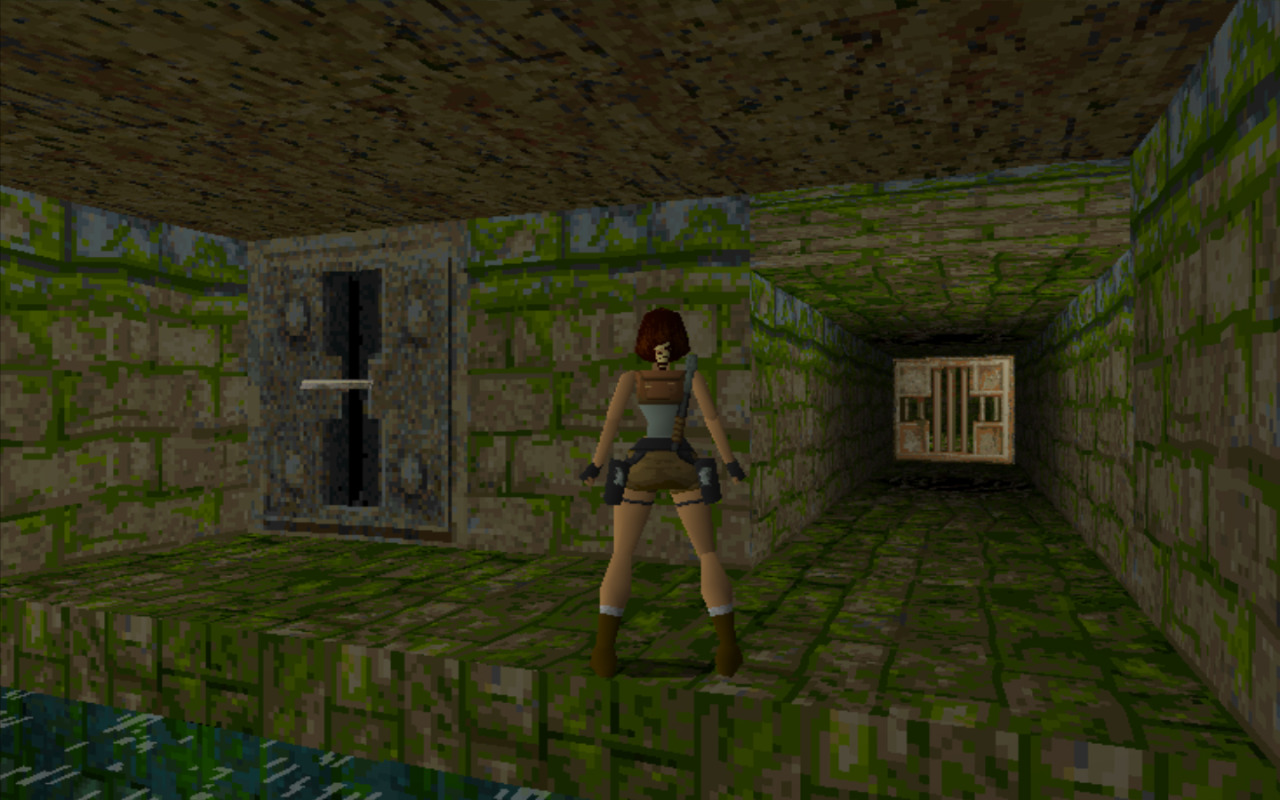
A lot of the time yous tin can visually trace the wireframe of things, this makes it easy to pivot the mode as "low-poly", only how lowpoly it really is?
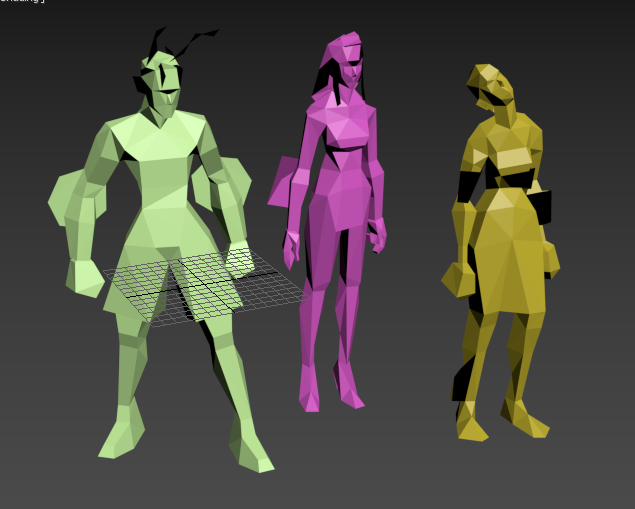
Characters in Vagrant story average 500 triangles per grapheme. Characters in MGS go from ~450 for pocket-size characters to ~650 for major characters. So 500-600 triangles is a solid baseline for a chief character in a third person game.
This limit brings out some great brake for every aspiring 3D artist. You accept to know your limb deformation techniques (search-engine "Limb Topology" and browse around the polycount wiki to detect some great examples and deformation ready examples), but as you might've noticed, some games decided to not wrestle with skinning and deformation and direct upwards discrete the limbs or even made their characters out of chunks. This is perfectly noticebla if y'all compare the OG Grim Fandango and the remaster, where they botched the shading and you can see the $.25 in all of their glory.
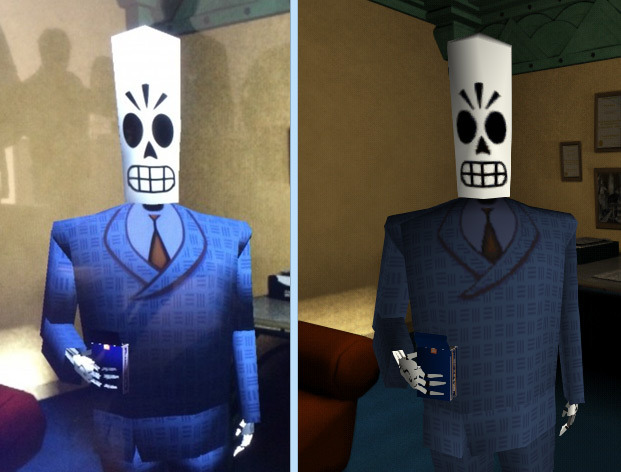
Another like shooting fish in a barrel case is Metal Gear Solid. Characters arms are carve up from their torse, merely this is covered with other geometry or they're of the same color and shaded closely.
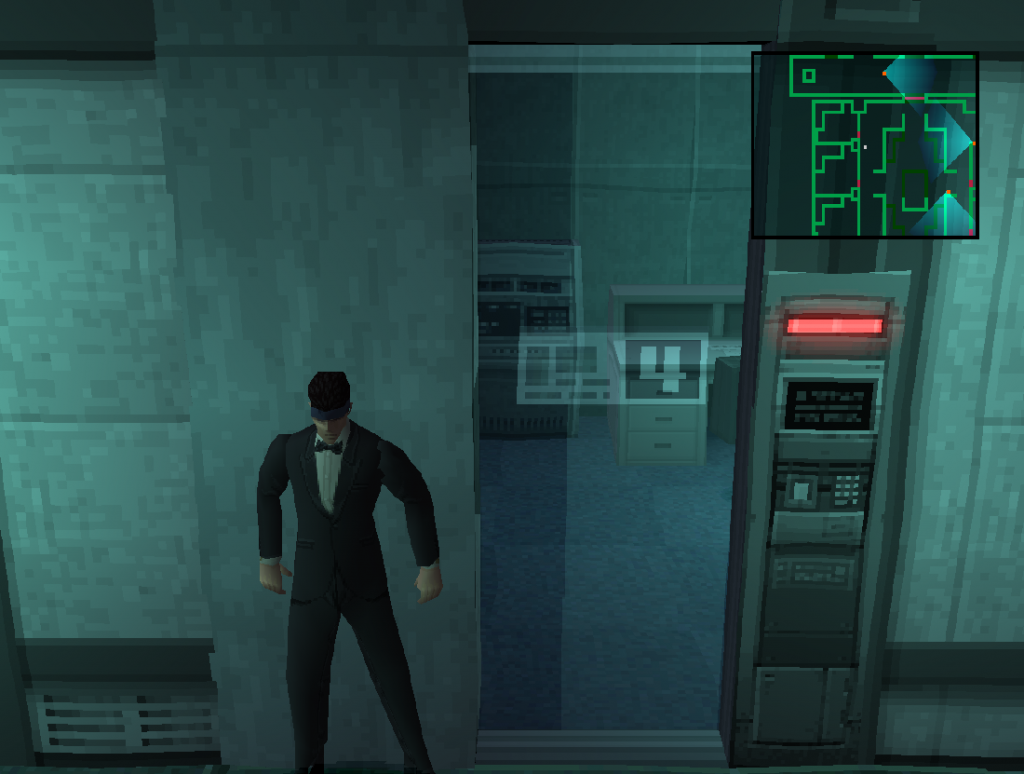
This style of doing it was used in a number of other games and allows for unlimited range of motility, while not looking weird.
It's like shooting fish in a barrel to fall into the trap of adding more triangles and loops, simply if y'all'll follow the dominion of "if information technology doesn't add to the silhouette, you don't need it", you'll go on to the style. Zoom out ofttimes and if an border doesn't add together anything from the altitude and is not disquisitional to the deformation in a graphic symbol, you really don't need it.
These principles are and then solid they've been alive for decades, in fact, one of the all-time looking PSP games "Peace Walker" sticks to these principles very closely, for example this soldier is just around 1500 triangles

Spilling out of the "low-poly" territory it's withal fabricated with the same economic system principles used in CD-3D style, making apply of every bit of texture and every triangle available.
Hither'southward another game of Metal Gear variety, Metal Gear Solid 2 is a direct heir to the pattern philosophy of MGS1, perfectly pixel-aligned unwraps permit for crisp detailing:

Another honorable mention goes to Animal Crossing on Nintendo 64
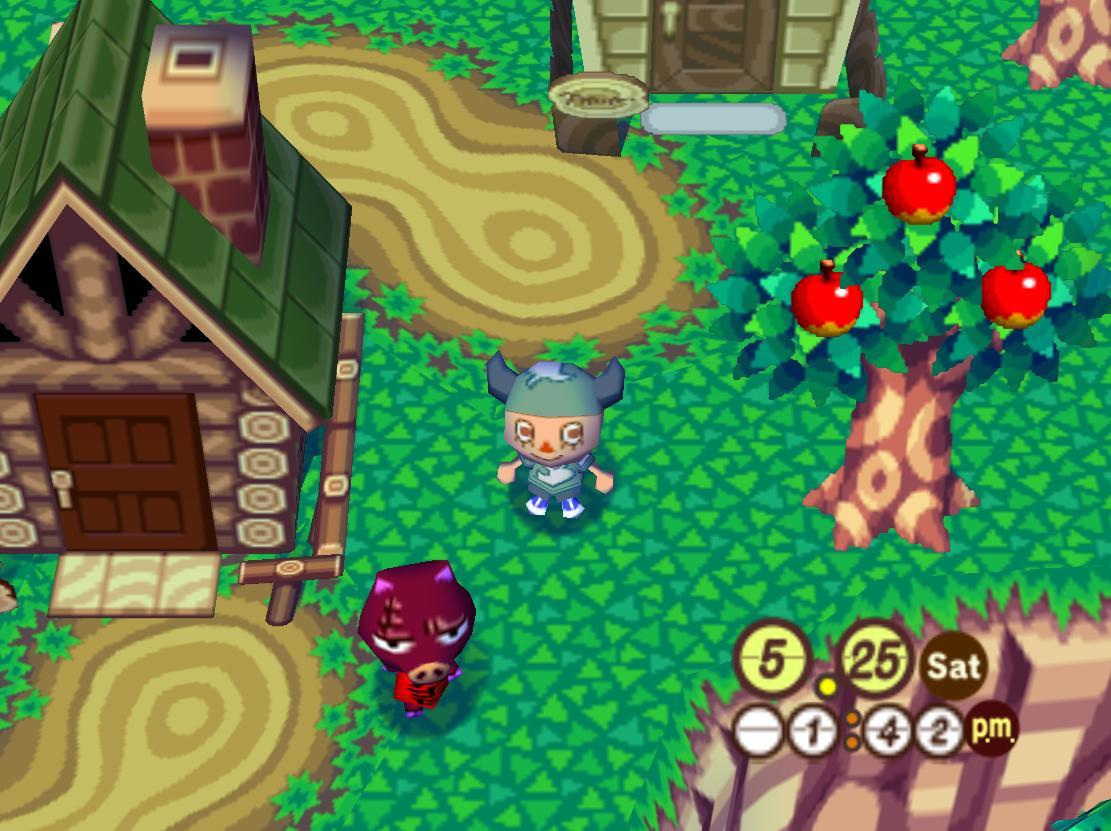
Animal Crossing combines meshes and sprites masterfully, uses pixel-aligned UV unwraps and makes up their own trick when creating landscape.
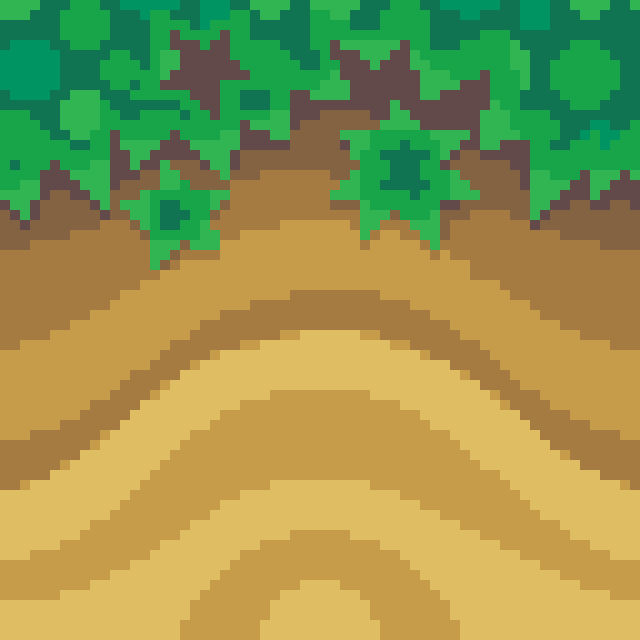
By unwrapping the repeating texture on each triangle of a hexagon they create these smooth patches of sand without the need for big or unique textures. It's only 64x64 and 9 colors, but the mileage you tin can get out of information technology is insane!
And this honestly sums up the CD-3D style perfectly, it's the fashion governed by economy. There's no need for insane textures for abrupt lines, and millions of colors for smooth gradients. Now of course all of these are non rules, but recommendations, you can certainly bend the rules and meliorate on some aspects. Earlier nosotros go, here'south some more pictures to get you inspired.
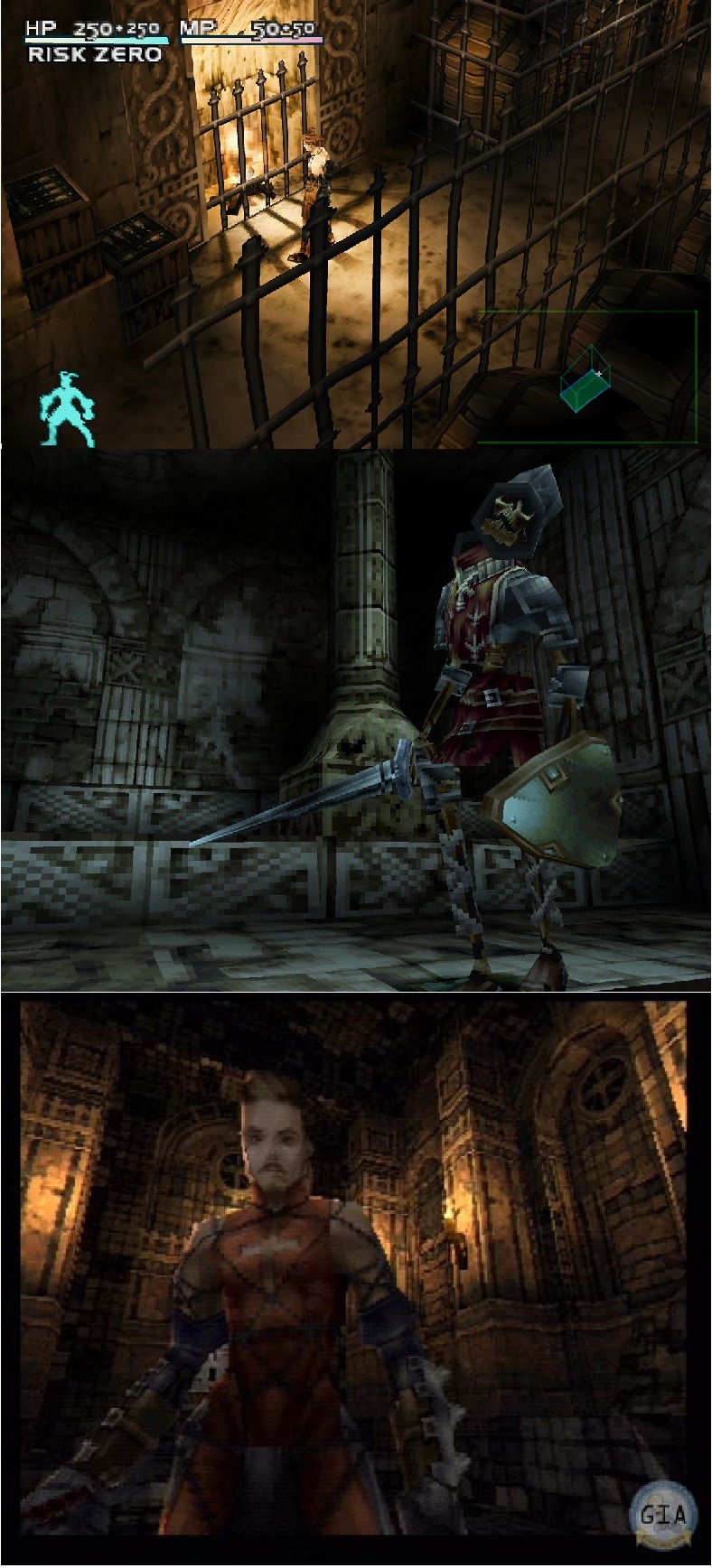
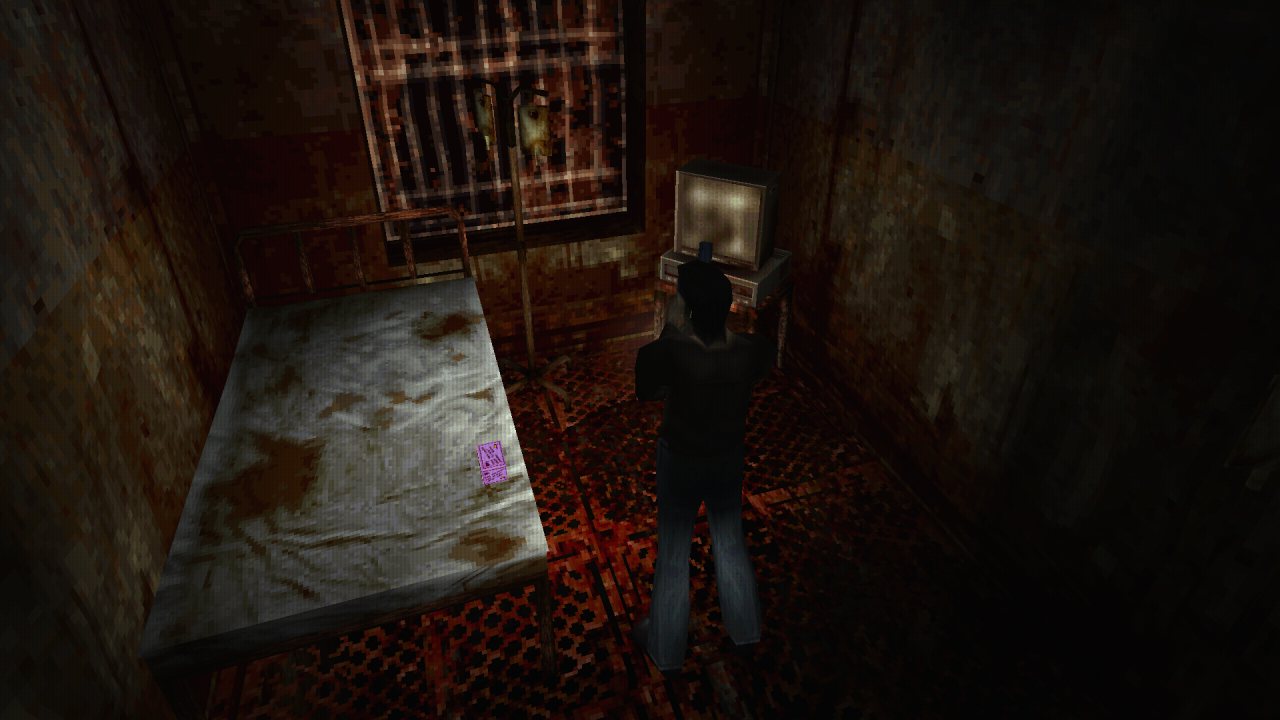
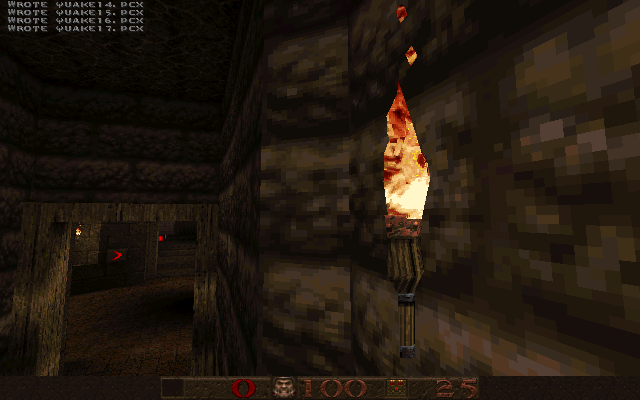

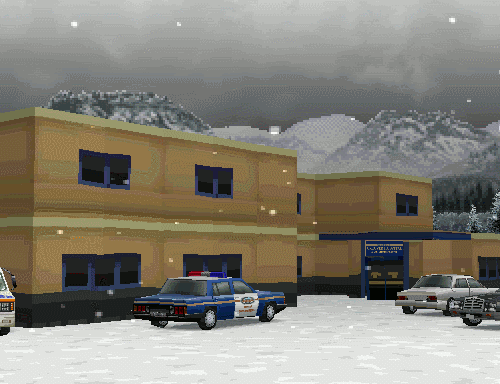

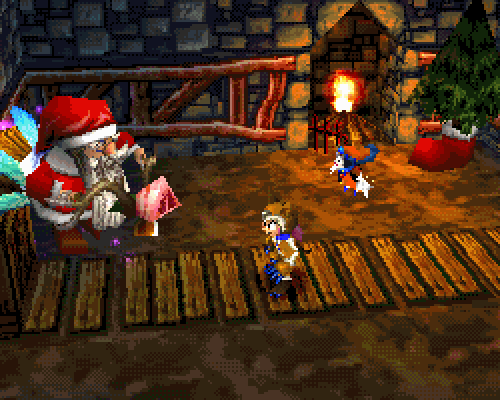
Source: https://spellfist-3d.tumblr.com/post/615902900826390528/guide-to-that-elusive-ps1-pixelated-lowpolybut